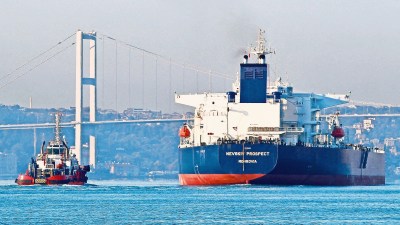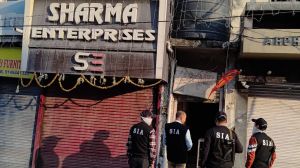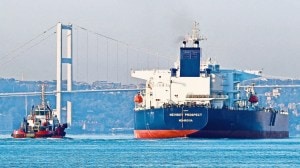Why all that Buddhadeb fought for rides on Nano
Ratan Tata’s warning today couldn’t have come at a worse time for West Bengal Chief Minister Buddhadeb Bhattacharjee.

Ratan Tata’s warning today couldn’t have come at a worse time for West Bengal Chief Minister Buddhadeb Bhattacharjee. Almost all major infrastructure projects of the state have been pushed to the backburner as many of these involved fresh land acquisition and the recent reverses in the rural polls have put his party cadres on the defensive.
On the success of the Tata Nano plant, therefore, rests the credibility of the Chief Minister’s determined campaign to brush aside what he has repeatedly called the state’s “wasted years” and attract investment. Many in the party and government say that Bhattacharjee sees the Nano plant as a “personal mission” — drawing a parallel to what the nuclear deal meant for the Prime Minister — because if it’s forced to leave the state, he realises the isolation that West Bengal could once again slip into.
So it wasn’t a surprise that within hours of Tata’s pull-out warning, Bhattacharjee said that “a majority of the people in the state wanted the Tata factory to come up.”
And his trusted lieutenant, Industries Minister Nirupam Sen, was in Singur this afternoon addressing a massive rally — the first in several months — to boost the eroded morale of the party’s rank and file before the Trinamool’s proposed blockade of the plant from August 24.
“We have sent papers to the them (Trinamool leaders). They have sent some papers to us. The contents could not be disclosed at this stage. But we are working towards some solution,” said Bhattacharjee. What these papers contain is unclear but Sen indicated the government was ready to consider anything short of a return of land which was legally not possible. Even a revised compensation package could be considered “should such a proposal come from any quarter,” he said.
The government’s search for a solution has acquired extreme urgency given the overall deep freeze that has set in as far as industrial investment in the state goes. Consider the following:
• The Barasat-Raichak Expressway, a multi-lane highway that was to connect the Kolkata airport with the Haldia port, is on hold. The projected investment in this and other related projects along it was estimated at Rs 40,000 crore over a period of 10 years by the Indonesia-based Salim Group. In villages in the North and South 24 Parganas districts, adjoining Kolkata, through which this expressway has been planned, the CPM was defeated in panchayat after panchayat emboldening the Trinamool Congress to step up its resistance.
• The same reverses had been witnessed in Singur, too. All village panchayats (lowest tier) and the panchayat samitis (the middle tier) were won by the Trinamool Congress. The poll setback came close on the heels of the party’s organizational set-up disintegrating after the arrest of Suhrid Dutta, the CPM’s zonal committee secretary last year, for his alleged involvement in the murder of Tapasi Malik, a Singur girl involved in the protest movement. Dutta is facing trial.
• Earlier, the chemical hub in Nandigram was abandoned in the face of violent protests. Although there is talk of relocating the chemical hub to Nayachar, top bureaucrats say it has been put on the backburner considering the huge investment and environmental clearances involved.
• A giant power plant planned in Katwa in Burdwan district had to be shelved because of protests over land acquisition.
• Both Bhattacharjee and Sen were forced to announce that land anywhere in the state would not be acquired for industry without the “consent of the people.” The DLF’s proposed township in Dankuni over an area of nearly 4,500 acres and an investment of over Rs 30,000 crore is also hanging fire.





- 01
- 02
- 03
- 04
- 05


























